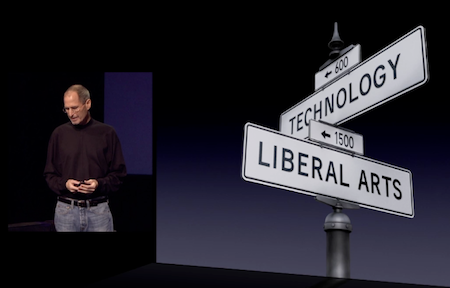I decided I would make some predictions about the upcoming iPad 2, since it’s hard to remember in retrospect what I (and the rumors) got right. Predicted iPad 2 specs:
- Updated design that is slightly thinner and slightly lighter.
- Same screen dimensions and resolution, but display is slightly brighter and fused to the front glass.
- Slightly longer battery life.
- Low resolution front-facing camera for video chat.
- Low resolution rear-facing camera for augmented reality applications.
- Dual-core A4 processor (“A5”?) clocked at about 1 GHz.
- 512 Mb of memory.
- SSD storage options of 16, 64, and 128 Gb.
- Ships with iOS 4.4 (iOS 5 waiting until iPhone 5).
- Supports to-be-announced iMovie for iPad ($9.99).
But I’m also going to go out on a limb and predict that Apple will cut the entry-level price of iPad 2 to $399.
Why is this possible?
From a component perspective, the iPad really is essentially a big iPod Touch. iPod Touches currently cost $299 for 32GB of storage. I can find component estimates for the latest iPhone 4 and the original iPad. The main differences are (iPhone vs. iPad):
- display ($38 vs. $95)
- case ($20 vs. $35)
- battery ($6 vs. $18)
The most expensive part by far in the original iPad was the touchscreen display, estimated last April to cost $95. This cost was largely due to the 9.7-inch capacitive touch sensor having only entered mass production just for the iPad. A year later, with tens of millions of these larger touch sensors manufactured, the cost has presumably come down dramatically, even when offset by new technology that fuses the display to the front glass panel. Let’s estimate that the touchscreen part now costs roughly $65 ($27 more than the iPhone retina display).
Assuming the other component prices are comparable to the iPod Touch (which seems reasonable to me, since they are essentially the same chips), the total price differential is just $48. So even with a large margin of error, it seems that Apple can afford to price the iPad at a retail price premium of just $100.
Steve Jobs has repeatedly said that Apple wants to price the iPad very competitively. The product’s tagline is still: “A magical and revolutionary product at an unbelievable price.” If they can afford to cut the price further, I think they will.
There is also some recent believable speculation that Apple will release another line of iPads in September. This will likely be a premium line with a higher entry price point (perhaps $599) that includes a retina display and correspondingly upgraded processor, graphics chips and memory. In other words, selling a cheaper iPad does not limit Apple’s ability to sell expensive iPads in the future, just as selling cheaper iPods and Macs has not limited Apple’s ability to sell more expensive lines of iPods and Macs.
Apple’s primary advantage in the tablet market is software, not hardware. By carefully optimizing iOS software for the specific chips built into iOS devices and by nurturing their platform of media, apps, and services, Apple has managed to squeeze an incredible amount of customer value out of relatively cheap and underpowered hardware (made even less expensive by Apple’s strategic use of cash reserves). I believe we have only scratched the surface of what is possible on the software side, even when relying on just the basic hardware of the original entry-level iPad.
Apple has stated that they do not currently know how to make a quality laptop for less than $999, but if they did, they would. It looks like they do know how to make a quality iPad for $399, and if they can, they will. The iPad does not need better hardware specs to be high-quality. Unless Apple has dreamed up truly amazing new functionality (which they occasionally do), I think consumers will prefer a lower price for an already high-quality product. A $399 iPad will really be hard for competitors to beat.
Update: Most of my co-workers think Apple will release a new iPad at $499 and lower the price of the original iPad to $399, as they have been doing with iPhones and have done in the past with some Macs. They don’t think there is much incentive for Apple to cut prices on the latest, greatest iPad. I wouldn’t be surprised if my co-workers are right. However, I still think my scenario above is not out of the question.
Update 2: My co-workers got it mostly right; the iPad 2 was launched with the same prices as the original. Original iPads are available starting at $399, but only while supplies last.

